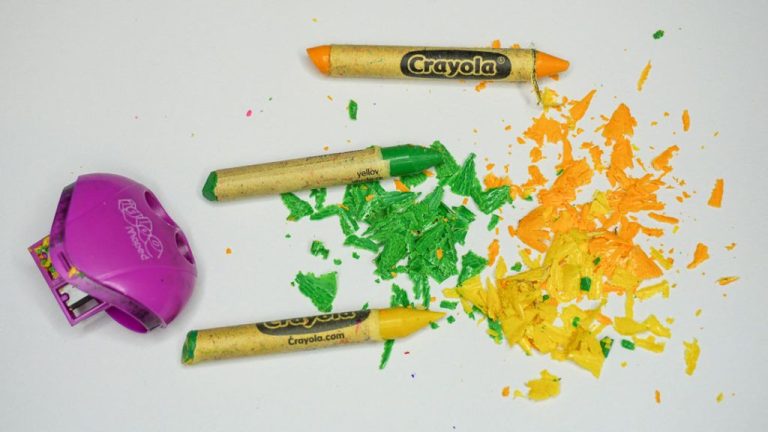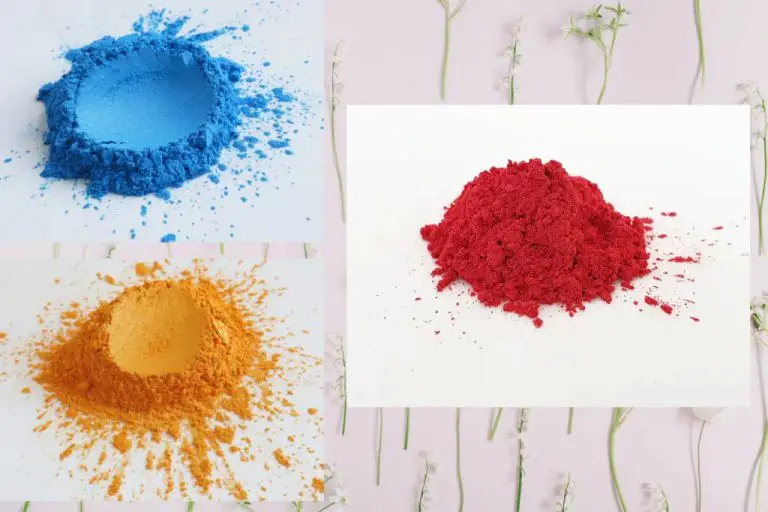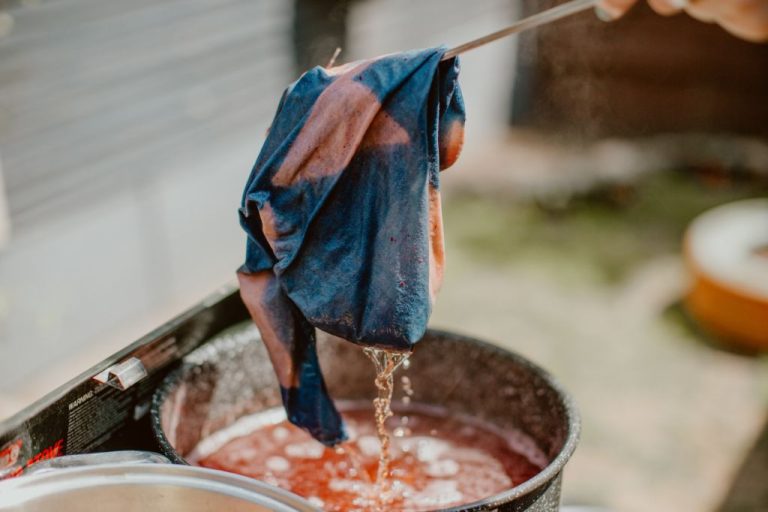What Can I Use To Color Candle Wax?
Candle wax coloring is the process of adding pigments or dyes to plain white candle wax to create colored candles. People have been coloring candles for centuries, with some of the earliest known colored candles dating back to Ancient Egypt and Ancient Rome [1]. Candle makers can use a variety of different materials to color candle wax, from traditional options like crayons and liquid dyes to natural colorants like fruits, vegetables, and spices.
There are two main techniques for coloring candle wax: mixing colorants directly into melted wax, or using dye blocks to color the wax from the outside as the candle burns. Most amateur candle makers use liquid dyes, powder pigments, crayons, or dye chips to tint the wax. Adding coloring while the wax is melted provides vivid, even color throughout the candle. Professional candle makers also have the option of using automated dye injection systems for mass production.
The most common colorants for candle wax are liquid dyes, dye blocks, crayons, mica powder pigments, and food coloring. Each material has its own advantages and disadvantages in terms of color vibrancy, bleeding, and ease of use. This article will provide an overview of the various options for coloring candle wax, along with guidance on choosing and mixing colors.
Food Coloring
Food coloring is a convenient option for coloring candle wax since it’s readily available in most homes. Liquid, gel, and paste food coloring can all be used to add color to candles. However, there are some important considerations when using food coloring:
The main downside to food coloring is that it is water-based, while wax is oil-based. This means the food coloring may not blend fully into the wax, leading to an uneven color distribution. Gel or paste food colors are thicker so they incorporate better than liquid food coloring. Make sure to stir thoroughly when adding any type of food coloring to wax to help it distribute evenly.
Food coloring can also cause sweating or frosting on the candle surface as the wax burns. This happens when the water content of the food coloring evaporates. To prevent sweating, limit the amount of food coloring to 1-3 drops per pound of wax. Adding too much food coloring can also clog the candle wick.
For best results, seek out oil-based food coloring made specifically for candle making. These incorporate into wax better than regular food coloring. Candle dye blocks or liquid candle dyes are even better options for coloring wax as they are formulated to be fully compatible with wax.
Overall, standard food coloring works in a pinch but may not yield the most vibrant, evenly colored candles. Special candle dyes are preferable for reliable, professional results.
Crayons
Crayons can be a fun, colorful way to add pigment to candle wax. The first step is to peel the paper wrappers off the crayons. Break the bare crayons into small pieces and put them in a glass container or metal tin. Old crayons or broken crayon bits work perfectly for this. Melt the crayon pieces by placing the container in a saucepan with 2-3 inches of water over medium heat on the stove. Once melted, you can mix the liquid crayon with candle wax. Some good options are paraffin wax, soy wax, or beeswax. You’ll want about a 1:3 ratio of crayon to wax. Stir thoroughly as the wax melts to distribute the color evenly. The crayon will tint the wax once combined. Let the mixture cool slightly before pouring into containers or votives with wicks (source). Nearly any type of crayon works for candle making, but softer crayons like Crayola melt faster than harder varieties. Vibrant colors like reds, blues, and purples make dramatic candles.
Dye Blocks
Dye blocks are a concentrated form of liquid candle dye that comes in block form. They are an easy, mess-free way to add vibrant, deep colors to candle wax. Dye blocks offer some key advantages:
Highly pigmented – Only a small amount is needed to achieve deep, opaque colors in candles. According to The Flaming Candle, 1/8 to 1/4 inch cube is enough to color 1 pound of wax (The Flaming Candle).
Convenient – Dye blocks are tidy and easy to handle. There’s no dripping or mess like liquid dyes.
Versatile – They can be used to color soy, paraffin, beeswax and other candle waxes. Dye blocks melt easily into hot wax.
To use dye blocks, simply cut off a small piece of the desired color with a knife. Add it to melted candle wax and stir until the color is evenly distributed. Use 1/8 to 1/4 inch cube per pound of wax. Add more dye gradually if a darker shade is desired. Let the wax fully reach pouring temperature to ensure the dye fully incorporates.
Liquid Candle Dyes
Liquid candle dyes are specially formulated dyes designed for use in candle making. They are concentrated, oil-soluble dyes that mix easily into melted wax. Liquid dyes produce bright, even color and are the most versatile type of candle dye.
Types of Liquid Dyes

There are two main types of liquid candle dyes:
- Oil-based dyes – These dyes are dissolved in oil to help them mix into wax. They produce vibrant colors.
- Water-based dyes – These dyes are water soluble and need to be mixed with rubbing alcohol before adding to wax. They tend to produce paler or pastel colors.
Pros and Cons of Liquid Dyes
Some benefits of using liquid candle dyes include:
- Produce bright, saturated colors
- Mix easily into melted wax
- A little goes a long way – only need to use a few drops
- Create ombre effects by layering colors
Some downsides are:
- Can bleed or fade over time
- Some dyes may clog wicks
- Need to be careful with measurements for true color
Mixing Techniques
When using liquid dyes:
- Melt wax completely before mixing in dye
- Stir well to distribute dye evenly
- Add dye drop by drop until desired color is reached
- Allow wax to cool slightly before pouring into container
- Consider mixing colors in separate containers before layering
With practice, liquid dyes allow for vibrant colors and creative effects in candles. Follow the manufacturer’s instructions for best results.
Natural Colorants
Natural candle colorants are a great way to add color to your candle wax using herbs, spices, and other plant materials. Some popular natural options include:
Turmeric powder or turmeric essential oil – adds a vibrant yellow color
Beet powder or beet juice – creates a deep red tone
Chlorophyll liquid extract – provides a rich green color
Annatto seeds – soak in oil to produce a reddish-orange hue
Paprika powder – imparts a reddish or orange tint
Matcha powder – gives a nice green color
Cinnamon sticks or powder – results in a reddish-brown color
Rose petals – for a light pinkish tone
Lavender buds – lend a light purple shade
Many herbs, spices, fruits and vegetables can be experimented with to create an array of natural candle colors. Always use an oil extraction method or mix the plant material into the wax while melting to infuse the color.
Essential oils like rose otto, mandarin, and chamomile can also subtly tint the wax when added in small amounts.
The benefit of natural colorants is that they often provide therapeutic aromas in addition to rich colors. Just be sure to test for dye set and bleeding before selling scented candles colored this way.
Mica Powder Pigments
Mica powder is made from natural mica mineral and provides a shimmery, pearlescent effect when mixed into candle wax. The particle size of mica powder varies, with ultra fine powder providing vivid colors while coarser powder creates a more subtle sparkling effect.
To use mica powder, first melt your candle wax completely. Then stir in a small amount of mica, starting with 1/8 to 1/4 teaspoon per pound of wax. Mix thoroughly to evenly distribute the mica. Add more as needed to achieve your desired color intensity. Use a toothpick to add powder a little at a time for more control over the color.
Mica powder can be purchased from candle and soap making suppliers in a wide variety of colors, often sold in 1 ounce or larger quantities. Price ranges from around $1 to $5 per ounce. Popular colors include gold, silver, red, blue, green, and copper [1].
Take care not to add too much mica, as this could clog the candle wick. Always test a small amount first to achieve the ideal color saturation.
Choosing Colors
When choosing colors for candle wax, it’s important to consider color theory and the moods associated with different hues. Color theory examines how colors interact with and relate to each other. Combining complementary or analogous colors creates pleasant, harmonious palettes. But pairing clashing colors makes bold, vibrant statements.
Different colors also evoke certain moods and emotions. For example, red symbolizes love, passion, and intensity. Blues and greens are calming, peaceful colors. Bright, warm colors like yellow bring happiness and optimism. Dark or muted shades like burgundy or navy blue create mysterious, elegant vibes. Consider the overall mood you want to achieve and choose wax colors accordingly.
Popular color pairings for candles include:
- Red and pink for love
- Blue and green for tranquility
- Purple and gold for spirituality
- Orange and yellow for joy
With so many options, get creative and have fun combining colors in your candle wax! The colors you choose can entirely transform the look, feel and meaning behind your candle.
Troubleshooting
One of the most common issues when coloring candle wax is poor color dispersion, where the dye does not evenly distribute throughout the wax. This can lead to a mottled or streaky appearance in the finished candle. Here are some tips for fixing color dispersion problems:
Make sure to use a dedicated candle dye rather than food coloring or other household dyes. Candle dyes are formulated to properly blend with wax. According to a discussion on Craftserver.com, food coloring and other non-candle dyes may not properly disperse in the wax.1
Stir the dye powder or liquid dye thoroughly as the wax melts to ensure even mixing. Let the wax reach 185-200°F before adding the dye so it is fully melted and liquid. As advised on Reddit, adding the dye when the wax is too cool can lead to poor dispersion.2
After adding the dye, continue stirring for 2-3 minutes to fully incorporate. Pouring too soon can cause the dye to settle on the bottom or separate as the wax cools and hardens.
Avoid adding too much dye at once. Gradually increase in small increments for a deeper color. Overdosing with dye makes it harder to blend in the wax.
Use a double boiler method to gently heat and hold the wax at the ideal temperature for better dispersion. Quickly heating in the microwave can cause uneven melting.
Test a small sample before pouring full candles. Check for streaks, blotchiness, or dye settling on the bottom and adjust as needed.
Increasing fragrance oil can help bind the dye. But too much fragrance can alter the wax properties, so use sparingly.
Switch wax types if dispersion remains a problem. Soy wax, for example, holds dye extremely well compared to paraffin.
Creative Techniques
There are many creative ways to design candles to make them unique and visually appealing. Some popular techniques include:
Swirl Designs
Swirling two or more colors of wax while pouring creates an eye-catching effect. This can be done using pour pots to layer colors, or using a chopstick or skewer to create swirls by stirring the wax. Varying the width and pattern of the swirls allows for many different designs.
Layered Designs
Layering wax of different colors and allowing each layer to partially set before adding the next creates distinct horizontal bands of color. Quickly pouring thin layers prevents too much blending. Embeds can also be added between layers.
Embeds
Objects like dried flowers, coffee beans, or seashells can be partially embedded into the wax to decorate the interior of the candle. These should be added after the first layer has partially set. Sprinkling glitter or sand between layers also creates sparkling effects.
Luminary Designs
Etching or cutting designs into the sides of pillar candles makes them glow beautifully when lit. Consider geometric patterns, animals, trees, or snowflakes. Tea lights can also be placed inside glass containers with cutout silhouettes.



